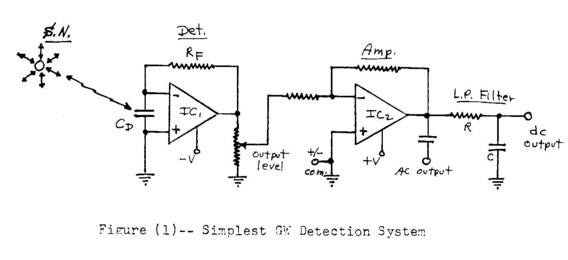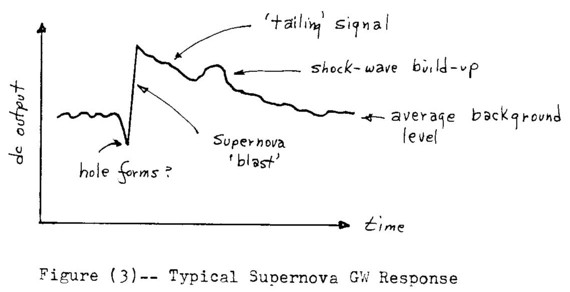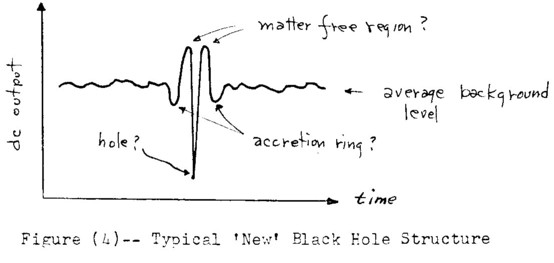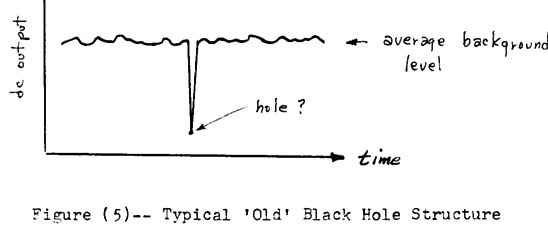Supernovae and Black Holes
Abstract
The existence and development of supernovae and black holes, which are postulated in conventional astrophysical theory. Are examined from the viewpoint of the author’s rhysmonic cosmology. The actual existence of these effects are confirmed with the gravitational signal astronomy techniques which were developed by the author. The theoretical and experimental data are compared and some conclusions are drawn.
Introduction
Astronomy in recent years has undergone a revolution in both theoretical and observational methods. These are the result of new advances in scientific technology, which not only opened up new observational techniques such as observations at electromagnetic frequencies other than visible light, but also gave some evidence that our universe, in its furthest observable reaches, obeys the same scientific principles as is observed here in our own environment. These principles have been used by the astrophysicists to theorize on the basis for some of the effects noted in these astronomical observations. There are many effects but this short article will consider only the observation of supernova effects and the possibility of the existence of black holes.
Supernovae, of course, are observed effects and thus are not just purely theoretical objects. The possible existence of black holes, however, is still theorized and has not yet been unequivocally conformed in either theory or in present observational methods. However, while the theoretical aspects appear to be somewhat valid, the observational attempts made by conventional astrophysicists to confirm these effects have been mainly in terms of quadrature-type gravity-wave signals, which are really, in essence, but a form of electromagnetic radiation. Such signals would be expected to have very long wavelengths and very low energy content, and thus would be a very elusive type of radiation signal to be detected with presently developed techniques. The author believes that perhaps some of the so-called micropulsations being observed with some magnetometers might be such signals.
The main problem today in the attempts to observe any gravitational radiation signals has been the insistence of the conventional (orthodox) astrophysicist that only the quadrature-type signals of Einstein are permissible. Rhysmonic cosmology, however, has shown that longitudinal, monopolar, or scalar-type gravity signals exist profusely in this universe and are easily detectable with rather simple detection techniques (See Refs. 1-5). Such techniques and experimental results, as they apply to supernovae and black holes, will be discussed in the remainder of this short article.
Rhsymonic Viewpoints
Rhysmonic cosmology (Ref. 1) is a very basic theory which applies to all of existence and scientific technology. In a way, it also confirms much of the theoretical speculations of present day astrophysicists. While rhysmonic cosmology is a very fundamental theory, which deals largely with the substratum of the universe (the aether, if you wish) it also relates very well to the macroscopic aspects of the universe. Therefore, he gravitational aspects considered in this cosmology (Ref. 6) lead to predictable effects in the substratum or aether of this universe which can also be observable in the macroscopic world of man or his instrumentation. Of prime importance is the prediction that the scalar gravitational signals can interact with scalar-type electric fields and scalar-type magnetic fields. Of particular interest is the interaction of gravity with scalar electric fields, since this forms the basis for many of the author’s gravitational signal detection systems. While some of these techniques may have been observed in the past by lone and unappreciated researchers, they had not been really recognized for their true value, since many of the conceptions required are not yet generally recognized or accepted by the orthodox scientific community. While a philosophy behind many of these concepts is given in various works by the author, no attempt will be made here to justify the theories other than in the experimentally observed results, which will be shown to correlate very well with the otherwise noted astronomical effects.
Experimental Detectors
Scalar type (longitudinal or monopolar) gravitational signals from the universe are observable as perturbations superimposed on the earth’s ‘static’ g-field. The earth’s static field (g-field) can be measured with simple gravimeters of the electronic type (Refs. 1-4) or of the spring scale type (Ref. 5). The electronic versions are more suitable for the detection of supernova effects and black holes and thus only those types will be considered here. While some actual detection systems are considered in more detail in the references, a very simple description of the basic detection process is given using the simplest circuitry shown in Figure 1.
Figure 1 --- Simplest GW Detection System

The detection element is a rather large-value capacitor (order of 2000 uF), CD, in which the scalar fields developed by the electron-ion pairs in he dielectric material can be ‘modulated’ by interaction with the monopolar or scalar gravity fields which ‘proceed’ instantly from the distant supernova, S.N. (Ref. 1). These perturbations of the earth’s g-filed can be active, as those which appear when there are large and rapid movements of mass, e.g., when a star mass collapses to a neutron star or black hole in the supernova event, or passive, when the black hole which is created in the supernova event causes a ‘shadow effect’ which can modulate the GW signal levels which may be in line with this highly concentrated mass and the observer’s meridian position on earth. Modulations of the electron-ion structure in the detector capacitance, CD, lead to some small current fluctuations in the external input circuitry and these are amplified to higher level voltage fluctuations by IC1, which is operated in the current-to-voltage mode. The combination of the detector element, CD, and the IC’s mode of operation results in a harmonic type oscillation where the ‘polarization’ effects in the capacitor, CD, are restored by the reverse electric fields developed from the IC. This enables a rather pure sine-wave mode of oscillation, with the frequency of the oscillation established by the amount of charge in the detection capacitor, i.e., the capacitance of CD, and the feedback voltage, which is largely a function of the feedback resistance, RF. Since the variation in g-field levels is also equivalent to a variation in scalar E-fields, the gravitational output signals generally have two components; a dynamic variation or an AC signal output, and a slowly varying offset voltage variation, or a DC signal output. The AC component can actually display on an oscilloscope the gaussian nature of the collapse of a supernova star to a black hole, and this process can also be heard aurally. Meanwhile, the DC component, when processed through a low-pass filter element, can also display and record on a strip chart recorder the variations or ‘shadow effects’ caused by the presence of dense masses which happen to be inline with the observer’s meridian position on Earth. The detection ‘window’ is essentially the cross-sectional area of the active portion of the detecting element, capacitor CD in this case, and thus has extreme resolution, i.e., the ‘beam size’ is in the order of but a square inch or so.
The actual detection circuits used in the observation of supernovae and black holes are somewhat more complete and are doubly Faraday-shielded in practice to avoid any possible RFI problems, but in essence they operate essentially as briefly described above. Some experimental results are now given, using a well-proven GW detection circuit (Ref. 7).
Experimental Results
The experimental detection systems respond to the many gravitational signals which are very profusely generated in this universe. The response and analysis here will be limited to novae, supernovae, and black holes only. Some typical responses will be shown and the data analyzed in terms of conventional astrophysics as well as rhysmonic theory.
Figure 2 --- Typical Nova GW Response

Novae
Novae in conventional astrophysical terms are stars which eject their outer layers of gas in a violent ‘explosion’, probably due to some nuclear reaction. Such events are detectable with this system due to the large transient movement of mass and the response is usually as depicted in Figure 2. There are two prominent features or signatures for this event; the blast itself and the observed ‘tailing’ of the blasted material as the detector ‘sweep’ pulls away from the blasted material due to the movement of the detector with the earth’s rotation. In some cases, a buildup of material due to the shockwave from the blast may be seen. Novae rarely leave lasting gravitational traces since the amount and density of material removed from the star is not great. Optically, ionization effects can leave traces of expelled material, e.g., planetary nebulae, but these are generally gravitationally transparent, and thus are not seen wit this system.
Figure 3 ---Typical Supernova GW Response

Supernovae
Supernovae in conventional astrophysical terms are believed to be stars which exceed a certain ‘critical mass; and thus collapse to a small very dense neutron star or a black hole structure, and in this process also expels much of its gaseous material. This process, which occurs only in the order of milliseconds (per conventional theory) also leaves certain prominent features or ‘signatures’ as depicted in Figure 3. First, there is the actual ‘collapse’ of the star to the black hole structure which is noted briefly with the DC component of this detector, but is more prominent in the AC component which can actually display the gaussian nature of the ‘implosion’ of this collapse on an oscilloscope. Also prominent is the actual expulsion of much of the star’s mass in the ‘explosion’ which again gives rise to a ‘tailing’ effect due to the detector’s sweeping action caused by the earth’s rotation. However, supernovae generally show a mass buildup due now to the shockwave from this blast. Also, supernovae generally show lasting gravitational effects which can be followed for days (and sometimes years), especially with regard to the black holes which can be developed.
Black Holes
Black hole structures developed by massive supernovae usually appear following the event, and are quite developed 24-48 hours after the event. The typical depiction of the new structure is given in Figure 4 and this also has some typical features or signatures. The black hole itself appears as a rather deep ‘shadow’ of very narrow width (time) since it is rather small size, in the order of just miles in diameter, typically. Also prominent is the newly formed accretion ring, which may apparently be formed of material which remained trapped by the dense hole and thus did not escape as did the material which is now forming the expanding shockwave ring systems. The development of this system usually can be followed for a few days, where the hole ‘deepens’ and the rings expand and vary in structure. The close-in accretion ring may remain for some time, but it is suspected that over a long period of time, only the black hole itself will be gravitationally visible as depicted in Figure 5.
Figure 4 --- Typical ‘New’ Black Hole Structure

Figure 5 --- Typical ‘Old’ Black Hole Structure

Galaxy Center
The Galaxy Center is considered by many conventional astrophysicists to harbor a very dense mass or even a black hole. Infrared and radio astronomy observations of the Center (necessary since dense clouds of gas and debris there prevent direct visible light observations) have supported such conjectures Gravitational signal observations of the Center by the author for the past 5 years have also confirmed to some extent the EM wave observations. This meant that the Galaxy Center had been relatively stable for the past 32,000 years or so. This is because GW signals are essentially instantaneous and thus depict the conditions there now, while the EM wave signals which travel at the speed of light depict the conditions which were there about 32,000 years ago. A rough comparison of the GW and EM scans for the Galaxy Center are given in Figure 6. The GW scan would seem to indicate that the central object in the Center is a very massive object and could be a small black hole.
Figure 6 ---GW and EM Scans of the Galaxy Center Compared Prior to December 5, 1986.

Figure 7 --- The New Galaxy Center Structure (1-10-1987)

However, on Dec. 1 and 2, 1986, some slight changes were noticed in the GW scans of the Galaxy Center structure. It appeared as if there was a movement of a nearby mass in this structure toward the central dense object in this structure. This might have been precipitated by a rather large supernova event noted near (?) the Galaxy Center on Dec. 1. Unfortunately, the Center was not scanned again until Dec. 6 and at this time it was observed that the original long-standing structure had disappeared and in its stead was a new very deep black hole structure with a well-defined accretion ring as shown in the depiction of Figure 7. The Center was followed daily for a month and the development of the new structure was observed. The Center has largely stabilized in this time period and thus appears to harbor a new deep black hole with the well-defined accretion ring structure. However, the original shockwave-created debris ring of about 7 minutes or arc in diameter had expanded to about 15 minutes of arc! The gravitational or ‘rhysmonic winds’ being created by this expanding material were recorded on l/f-type noise detectors by the author as very noisy and turbulent initially, but have since settled down to a more or less steady ‘wind’ (1-10-1987). These winds could possibly affect the normal weather patterns here on earth, especially at the latitudes between about 50 N Latitude and the north pole, where these gravitational winds are essentially parallel to the earth’s surface and thus could strongly affect the atmospheric conditions in this region. The reported anomalous weather conditions in Europe and Siberia during the month of January 1987 could well have been due to these winds. Time will tell if there is a correlation between the two.
Conclusions
Simple gravitational signal detection systems appear to confirm much of the processes of novae, supernovae and black holes as was expounded by some astrophysicists. Much of their theories also appears to be in agreement with tenets of rhysmonic cosmology. Therefore, these gravitational detections systems offer a new window to the universe which has already proven its usefulness as discussed in this brief article but also has detected many, many other objects and events in this universe. The catastrophic event in the Galaxy Center of about December 4 or 5, 1986, will be followed closely, especially with respect to the effects of the gravitational winds on the weather of earth. The observational systems are quite simple and the author invites interested open-minded researchers to join him in this effort.
References
(1) G. Hodowanec: Rhysmonic Cosmology; Monograph (August 1985).
(2) Ibid.: Gravitational Waves; Radio-Electronics (April 1986).
(3) Ibid.: Gravity Wave Detection; Radio Astronomy (November 1985).
(4) Ibid.: SETI with Gravitational Signals?; Radio Astronomy (April 1986).
(5) Ibid.: Simple gravimeter Detects Gravity Shadow Signals; Tesla ’86 (March-April 1986).
(6) Ibid.: The Nature of Gravitation (may 1985).
(7) Ibid.: Gravitational Signal Astronomy (September 1986).